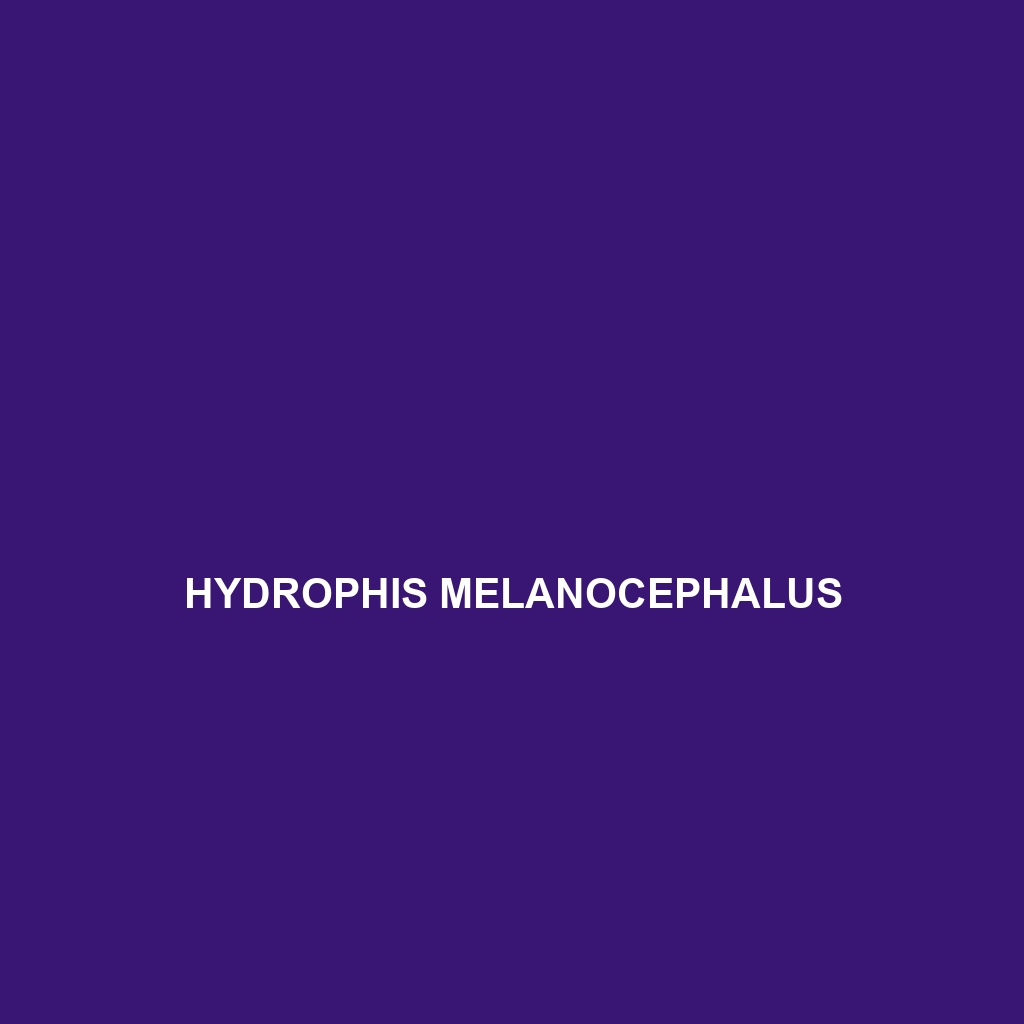Common Name
Hydrophis melanocephalus
Scientific Name
Hydrophis melanocephalus
Habitat
Hydrophis melanocephalus, commonly known as the black-headed sea snake, primarily inhabits coastal marine environments and is predominantly found in the warm waters of the Indian and Pacific Oceans. This species thrives in a variety of aquatic habitats, including shallow coasts, coral reefs, and mangroves, where the climate is typically tropical, offering abundant food resources and shelter. Rainforests near coastal areas and adjacent savannas can also provide transitional zones where these snakes can be observed. Marine habitats with sandy or muddy substrates, where they hunt for prey, are ideal for their survival. The black-headed sea snake is highly adaptable, allowing it to cope with the dynamic environmental conditions of its geographic range.
Physical Characteristics
Hydrophis melanocephalus displays distinct physical characteristics that make it easily recognizable. This snake can grow up to 1.5 meters (about 5 feet) in length, featuring an elongated and laterally compressed body that aids in swimming. One of its most notable features is its striking coloration; it possesses a characteristic black or dark brown head, which transitions into a lighter brown or yellowish body adorned with darker bands or spots. Its smooth scales contribute to its streamlined appearance, making it well-suited for an aquatic lifestyle. Additionally, this species has a flattened tail that acts like a paddle, allowing for efficient movement through water.
Behavior
The behavioral patterns of Hydrophis melanocephalus are intriguing and well-adapted to its marine environment. This species is primarily diurnal, meaning it is most active during the day. It exhibits unique hunting techniques, often ambushing prey from underwater and using its sense of sight to locate food. Additionally, Hydrophis melanocephalus is known for its mild temperament, showing minimal aggression towards humans unless provoked. Mating rituals occur during specific seasons, characterized by intricate displays and physical interactions. Though they are generally solitary, these snakes may aggregate in areas with high prey densities.
Diet
Hydrophis melanocephalus is a carnivore, primarily preying on fish and eels in its marine habitat. Its diet consists largely of smaller fish species, which it captures using a combination of speed and stealth. The black-headed sea snake employs a swallowing technique that allows it to consume its prey whole due to its highly flexible jaw structure. Notably, this species has adapted to hunting in both shallow waters and deeper oceanic regions, showcasing its versatility. Given its reliance on aquatic prey, the health of fish populations directly influences the feeding patterns and survival of Hydrophis melanocephalus.
Reproduction
The reproductive cycle of Hydrophis melanocephalus is fascinating and critical to understanding its life history. This species is ovoviviparous, meaning it gives birth to live young rather than laying eggs. The mating season typically occurs during warmer months, with a gestation period lasting around 6 to 7 months. Female sea snakes give birth to approximately 3 to 10 live offspring, which are well-developed and capable of swimming shortly after birth. Maternal care is minimal, as mothers do not guard their young, leaving them to fend for themselves in the challenging marine environment.
Conservation Status
The conservation status of Hydrophis melanocephalus is currently classified as Least Concern by the IUCN Red List. However, this does not eliminate potential threats to its population. Habitat degradation due to pollution, climate change, and overfishing poses significant risks to its marine ecosystem. Conservation efforts are focused on habitat protection and sustainable fishing practices to ensure the longevity of this species in its natural habitat.
Interesting Facts
There are several intriguing aspects of Hydrophis melanocephalus that contribute to its unique identity. One interesting fact is its capability to tolerate saline environments, allowing it to thrive in various coastal habitats. Despite its venomous nature, it is not considered a threat to humans; it typically only bites when threatened, and its venom is less potent compared to other sea snake species. Additionally, this snake is recognized for its remarkable ability to hold its breath underwater for long periods, often staying submerged for around 30 minutes while hunting.
Role in Ecosystem
Hydrophis melanocephalus plays a vital ecological role within its marine ecosystem. As a predator, it helps regulate fish populations, contributing to the balance of the aquatic food web. By preying on smaller fish and eels, this species aids in maintaining a healthy ecosystem balance and preventing overpopulation of certain fish species. The presence of black-headed sea snakes is also an indicator of a healthy marine environment, as they are sensitive to environmental changes. Thus, safeguarding Hydrophis melanocephalus is essential for preserving the ecological integrity of coastal habitats.
